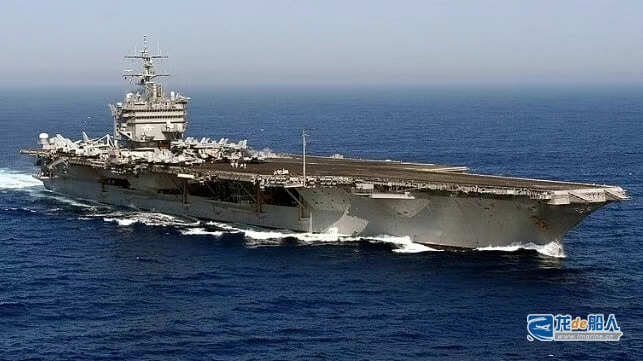Recently, the U.S. Department of Defense (DoD) signed a contract for the dismantling of the decommissioned nuclear-powered aircraft carrier USS Enterprise (CVN-65), marking the end of years of controversy over the disposal plan since the ship was decommissioned in 2017.

According to a contract list published by the US Department of Defense, NorthStar Maritime Dismantlement Services, headquartered in Mobile, Alabama, has been awarded a fixed-price contract worth US$536 million to dismantle, recycle, and dispose of the USS Enterprise aircraft carrier.
NorthStar Maritime Dismantlement Services, a joint venture between NorthStar Group Services and Modern American Recycling and Radiological Services, was established in November 2024 and is headquartered in Mobile, Alabama. It beat out Newport News Shipbuilding in Virginia and International Ship Recycling Ltd. (ISL) in Brownsville, Texas, for the dismantling project.
It is worth noting that ISL is the only shipyard with experience in dismantling conventionally powered aircraft carriers of the US Navy. The decommissioned USS John F. Kennedy aircraft carrier was towed from Philadelphia to Brownsville on February 2, 2025, for dismantling.

The US Department of Defense reported that the USS Enterprise “will be completely dismantled, and all materials will be properly recycled or disposed of. In particular, hazardous materials, including low-level radioactive waste, will be sealed and safely transported to designated licensed sites for treatment.”
The disposal process for this legendary aircraft carrier began in 2022, when the US Navy released a report exploring various options, including continued storage or dismantling. The following year, the US Navy confirmed its preference for dismantling the aircraft carrier using commercial facilities to avoid occupying valuable shipyard space and capacity.
The U.S. Navy analysis noted that although the nuclear reactor of the USS Enterprise has been defueled, there are still “residual radioactive and hazardous waste” onboard. During the dismantling process, hazardous components will be separated and securely stored for transport to storage facilities. NorthStar Maritime Dismantlement Services will be responsible for dismantling the remaining parts of the ship. The U.S. Department of Defense reported that the dismantling work will take place in Mobile, Alabama, and is expected to be completed by November 2029.
The contract will be a significant economic benefit for the city of Mobile, which saw a small increase in tourism when the ss United States arrived at the MARS facility to be converted into an artificial reef. However, the Mobile Chamber of Commerce opposed the dismantling of the aircraft carrier locally last year due to concerns about possible accidents or pollution.
For Mobile, the contract will bring significant economic benefits. Previously, when the SS United States arrived at the local MARS facility to be converted into an artificial reef, the city’s tourism industry saw a slight increase. However, the Mobile Chamber of Commerce opposed the dismantling of the aircraft carrier in the local area last year due to concerns about possible accidents or pollution.
Nicknamed “Big E,” the carrier was once a symbol of the U.S. Navy’s military power. Although it is smaller than the Nimitz- and Ford-class carriers in displacement, it is still the longest naval ship ever built, with a flight deck length of 1,123 feet (342 meters) and a displacement of approximately 94,000 tons. The official top speed is over 30 knots.
The USS Enterprise has been present for many important moments in the modern history of the US Navy, including participating in the blockade of Cuba during the Cuban Missile Crisis; air combat and bombing missions during the Vietnam War; the evacuation of the US Embassy during the fall of Saigon; bombing operations against al-Qaeda and the Taliban following the 9/11 attacks; and deployment to the Persian Gulf in support of Operation Enduring Freedom. Additionally, it also participated in early space programs, tracking John Glenn’s flight around the Earth aboard the Friendship 7 spacecraft.

Commissioned in 1961, the USS Enterprise was the first ship in the nuclear-powered aircraft carrier series. The ship suffered a fire in 1969 and underwent major repairs in the early 1970s, followed by life extension modifications in the 1990s and 2008-2010. After completing its final deployment in March 2012, the ship was officially decommissioned in December of the same year.
As the U.S. Navy plans to retire the first Nimitz-class aircraft carrier in the next few years, resolving the disposition of USS Enterprise is particularly important as it will provide an important reference example for the U.S. Navy as it transitions to the Ford-class aircraft carriers. The success of the “Big E” aircraft carrier will continue in a special way, as approximately 14 tons of steel salvaged from the ship will be used to build the third Ford-class aircraft carrier, CNV-80 – this new ship will inherit the name of “USS Enterprise” and continue the legend.


